Ven Pongal is a buttery lentil-rice porridge. Moong dal and rice are cooked together in the instant pot until they meld and topped with ghee infused with ginger, curry leaves, and black peppercorn.
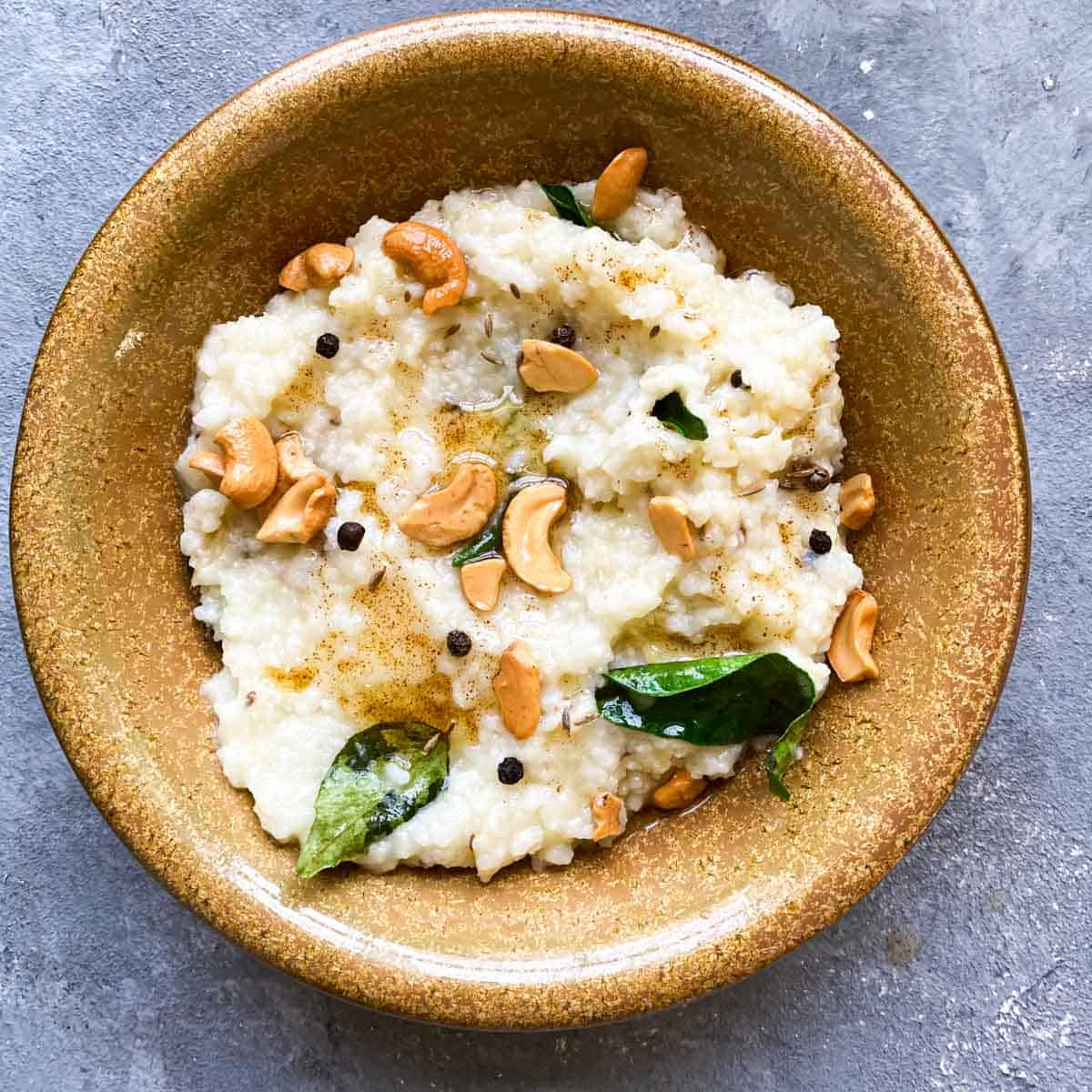
Pongal is a buttery lentil-rice porridge but also a four day harvest festival similar to Thanksgiving celebrated by Tamilians. Not surprisingly, the dish is often eaten during the festivities. Learn more about the harvest festival and its tradition in this blog post. However, this blog post will focus on pongal the dish and the techniques to make it.
Techniques for an easy and delicious pongal
- Wash rice and dal in running water until water runs clear - Washing rice and dal removes surface-level chemicals, residues, and starches from the rice and dal and ensures that both the rice and dal cook evenly, resulting in a cleaner tasting pongal.
- Whisk rice and dal for a creamy dal - Once the rice and dal have finished their cook time, it is important to whisk the dal with any of the remaining water left in the pot. The process of whisking the dal and rice helps emulsify the fats and starches in the pongal and breaks up the rice and dal pieces to create a creamy and homogenized mixture.
- Use instant pot or pressure cooker for faster cook times - With the instant pot, you can simply add your pongal ingredients to the pot and set it and forget it until you are ready to eat. The added pressure in the instant pot helps break down the rice and dal quickly compared to the stovetop method.
- Using moong dal helps pongal come together easily - Moong dal is the perfect dal for making a quick pongal. This lentil variety is thin, so it doesn't require soaking and cooks within minutes, which makes it especially ideal if you are making pongal on the stovetop. Read this article if you are interested learning about the other dal varieties in Indian cooking.
- Use short grain rice for a creamier dal - Short grain rice tends to be plumper and require less water to meld into a porridge. However, if you only have a rice variety like basmati on hand, go ahead and use it - just note that it might require a bit more water.
What type of rice to use for pongal?
There is much debate on what type of rice should be used for pongal. Traditionally short grain rice that is freshly cultivated in a given year's harvest is used for ven pongal. Typically in India, varieties that are used in India are sona masuri or ponni rice. Short grain rice in general requires less water and is easier to whisk into a porridge consistency. Long grain rice, in contrast, tends to stay separated.
However, most households in the United States don't tend to have these speciality Indian rice brands. The first option is to purchase a short grain rice for your pongal.
Can you use a long grain rice like basmati for pongal? The short answer is yes. Long grain varieties of rice will just require a bit more water for the rice and dal to meld. You can still use the recipe below, but if the basmati rice still holds its shape, simply add a bit more water. Once the dal and rice are soft, whisk until the rice gets to a porridge consistency.
Consistency of a great pongal
The consistency of a great pongal is highly opinionated topic. So I'll talk about MY ideal consistency for pongal...
- Lentils and rice should meld together and not hold their shape
- Pongal should be creamy and thick like mashed potatoes
- Pongal shouldn't be watery - If it is, just keep cooking it on the stove until some of the water evaporates.
- Pongal should be shiny with ghee - The best pongal is decadent and uses ghee liberally. I know a good pongal when I can see it glistening with ghee. Another indicator is that when you touch the pongal it shouldn't stick to your hands.
- Pongal shouldn't be lumpy - I hate a lumpy pongal that is dry. This is often a problem with pongal when you reheat it. The cure for lumpy pongal is to add some water, heat, and mix the pongal to help loosen it.
What type of dal to use for pongal?
There are many Indian dals that you can use for pongal. The two main dals used for pongal are toor dal and moong dal. I prefer moong dal to make pongal because it is a thinner variety that cooks really quickly. This enables me to make a dal in the instant pot or on the stovetop without soaking beforehand. You can alternatively use masoor dal, also called red lentils, which is equally thin.
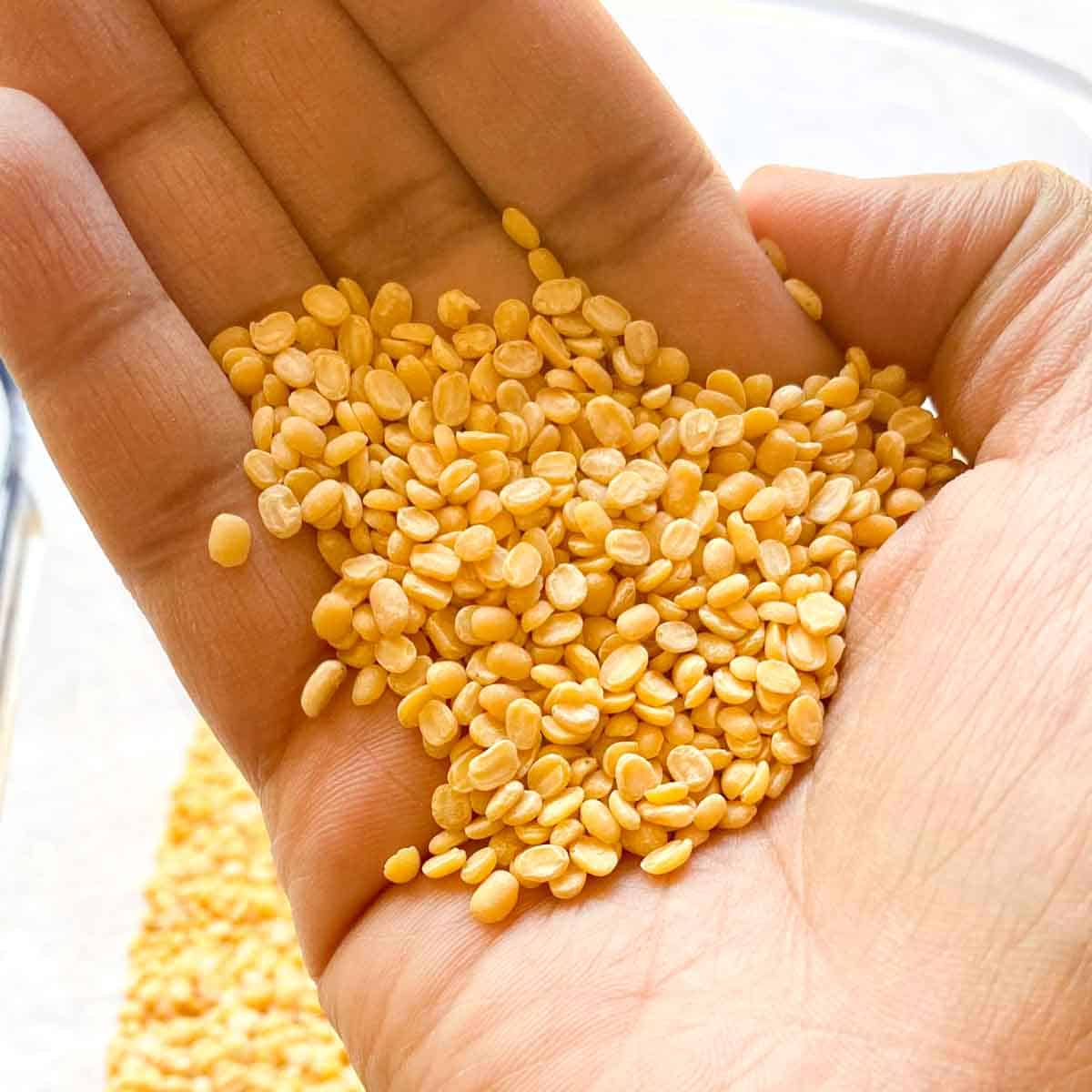
Ratio of Rice:Dal in Pongal
I use a 2:1 ratio of rice to dal in my pongal. This creates a decadent and creamy pongal that is reminiscent of a luxurious savory porridge or mashed potatoes.
However, if you are looking to increase your protein intake, you can use a 1:1 ratio of rice to dal. Just note that as you increase the ratio of dal to rice you are going to get a drier final consistency.
If you add extra dal to the pongal, add extra water, as dal requires much more water to cook. The rule of thumb is that if you add ¼ cup more dal, add double the amount of water. So in this example it would be ½ cup more of water.
Pongal vs. Khichidi
Pongal and khichidi are in the same family of food. They are both porridges made with lentils and rice. Pongal is a dish that is from Tamil Nadu. It is flavored with ginger, curry leaves, cumin, and black peppercorn. Khichidi on the other hand is a broader category of rice and lentil porridge that is eaten in the North. It has many more varieties due to the broader possible range of spices and vegetables in it.
Instant Pot for Pongal
Using an instant pot for pongal is my preferred way of making the dish. I love it because you can simply add all the ingredients to the pot and leave until the cook time is complete. It's also great because the added pressure helps cook the lentils and rice together quickly. Last, I hate to admit it, but the pressure cooker still intimidates me, so the instant pot is my alternative whenever I need that high pressure without the stress.
Pongal without pressure cooker or instant pot
If you are a beginner cooker and don't have a kitchen with an instant pot or pressure cooker - fret not. You can still make pongal on the stovetop. In fact this is a very traditional method of making it. The key to making pongal on the stovetop is to get a deep pot to make the pongal. The deep pot ensures that the water doesn't overflow.
To cook the pongal on stovetop, just add all the ingredients to the deep pot with a lid. Turn the stove to medium-high heat or until the water comes to a boil. Reduce the heat to medium and close the the pot with a lid on for 15-20 mins. With this method you will have to check on the stovetop pongal periodically, to turn down the heat if the water starts to boil too vigorously. In addition, add water if it runs out before the dal and rice and cooked.
Frequently Asked Questions
A short grain variety is best for pongal. In India sona masuri or ponni rice is typically used. However any short grain variety should do. You can alternatively use basmati or a long grain rice but just increase the water as long grain varieties have a harder time melding together.
You can use moong dal or toor dal for pongal. I prefer to use moong dal as it is a thinner variety that cooks faster. To learn more about Indian dal varieties, check out this blog post.
My recipe uses a 2:1 ratio of rice to dal for a creamy and decadent dal. However, if you are looking to increase your intake of protein, you can change the ratio to 1:1. If you add extra dal to the pongal, add extra water as dal requires much more water to cook. The rule of thumb is that if you add ¼ cup more of dal, add double the amount of water, so ½ cup more of water to compensate.
You can simply add the ingredients to a deep pot with a lid. Allow the water to come to a boil and cover and cook for 15-20 mins or until the lentils and rice and cook through and lose their shape.
Pongal is a rich dish that gets a lot of its decadence from ghee. However, if you are going to omit ghee, you can add butter (vegan or non-vegan) to get the richness. If not, substitute with a bit of oil while cooking the dal and rice. However, completely omitting the ghee/butter will result in a pongal that isn't as creamy.
Pongal goes very well with sambar as an accompaniment.
When reheating pongal, whether on the stovetop or in the microwave, add 2-3 tablespoons of water as the pongal will dry out as it sits in the fridge.
Nope. Both pongal and khichidi are lentil and rice porridges. However, pongal is a specific dish from Tamil Nadu and uses aromatics like ginger, black peppercorn, curry leaves, and cumin seeds whereas khichidi is more of an umbrella term that has many varieties that include different spices and vegetables.

Ven Pongal - A Creamy Rice and Lentil Porridge
Product Reccs
Ingredients
- ½ cup (100 g) short grain rice Look in notes for substitutes
- ¼ cup (65 g) split moong dal (hulled)
- 3 cups water
- 6 tablespoons unsalted ghee plus more
- 1 teaspoon sea salt
- 20 raw cashews
- 7 - 10 black peppercorn slightly crushed
- 1 tablespoon freshly grated ginger
- 2 teaspoons cumin seeds
- 10-15 curry leaves removed from stem
- ¼ teaspoon asafetida Optional
Instructions
Prep Ingredients
- Lightly crush 7 - 10 black peppercorn with a mortar and pestle.
- Add enough fresh ginger to a mortar and pestle and grind to yeild 1 tablespoon freshly grated ginger. It is also okay to use store bought ginger paste but fresh ginger tastes MUCH better.
Make Pongal
- Using your hands, rinse the ½ cup (100 g) short grain rice and ¼ cup (65 g) split moong dal (hulled) to release the excess starches. Drain the cloudy water and repeat this process until the water is nearly clear while rinsing.
- In an Instant pot, add rice, moong dal, 3 cups water, 1 teaspoon of the ghee, and 1 teaspoon sea salt and cook on high pressure setting for 12 minutes. Let the Instant Pot naturally vent for 10 minutes. We intentionally put a large amount of water so the rice and dal are easily mashable.
- Once cooked, whisk the rice and dal so they meld into one. The consistency should be of a thick congee or polenta. If the pongal is too runny, keep the Instant Pot on saute mode until the excess water evaporates. if the pongal is too thick, add a bit of water to loosen the pongal.
Make Topping and Tadka
- Add 7 - 10 black peppercorn, 1 tablespoon freshly grated ginger, 2 teaspoons cumin seeds to the remaining ghee in the pan on medium heat. Cook until the raw smell of the ginger dissipates and the cumin seeds start dancing in the ghee.
- Make sure that there is enough ghee still in the pan. If not, add another tablespoon as needed. Add 10-15 curry leaves, to the hot pan with spices and wait for the curry leaves to sputter in the oil or impart their aromatic scent. Once the curry leaves sputter, turn off the heat. Add ¼ teaspoon asafetida to the spices.
Assemble
- Pour tadka over the pongal and mix until thoroughly incorporated. Taste the pongal and add additional salt as required.
- Top pongal with cashews and enjoy on its own or with a side of sambar and coconut chutney.
Notes and Tips
- Look at this blog post for dal variety alternatives
- You can alternatively use basmati rice or long grain rice for your pongal you may need to add an additional 1 cup of water.
- If the pongal is too watery, simmer the pongal in the instant pot until the water evaporates and the pongal is creamy. If the pongal still has grains of rice and lentils that haven't melded, add ¼ cup of water at a time and allow the pongal to boil until soft enough, then whisk to emulsify.
- To reheat the pongal add a bit of water to the pongal and heat on stovetop or in the microwave


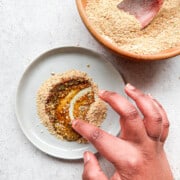
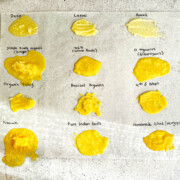
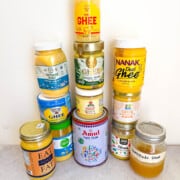
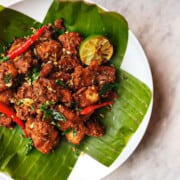
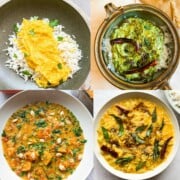
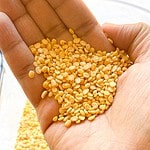
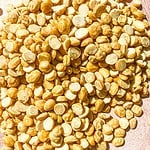
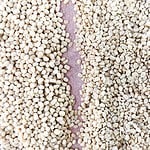
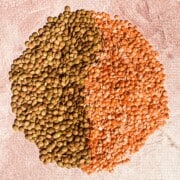

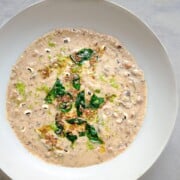
hungryhouse.in says
Thanks for sharing your important information about pongal.The pongal recipe is so easy and your guideline is very important in making pongal recipe.
Sonia says
Excellent basic ven pongal recipe that I used to celebrate the Pongal festival. I adapted the recipe to make it on the stovetop and also veganized with vegan ghee, but maintained the ratios of porridge and tadka ingredients. The cashews especially were just SO GOOD sautéed in ghee, and added a perfect crunch to the dish. Yum!!
Gopi says
Hi Shri, I love this pongal recipe! I would love to interview you on my podcast Cook Like An Aunty which focuses on homemade Indian food in North America. The listeners would love to hear how you learned to cook Indian food. Please email me if you want to join me for an episode. Thanks!